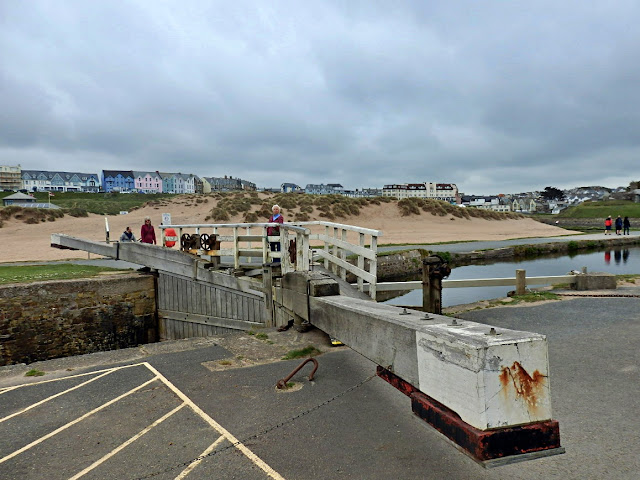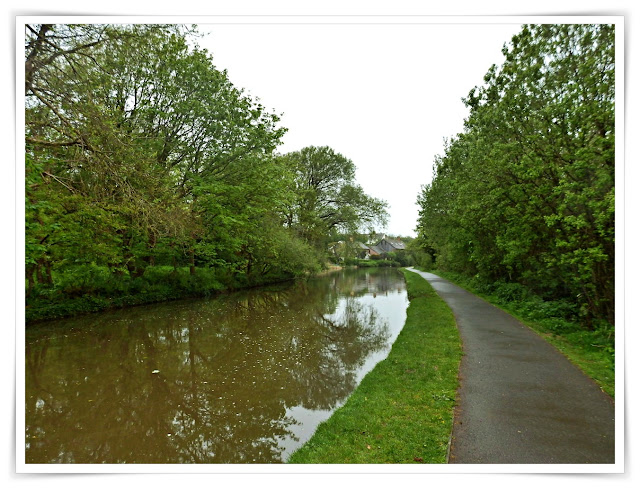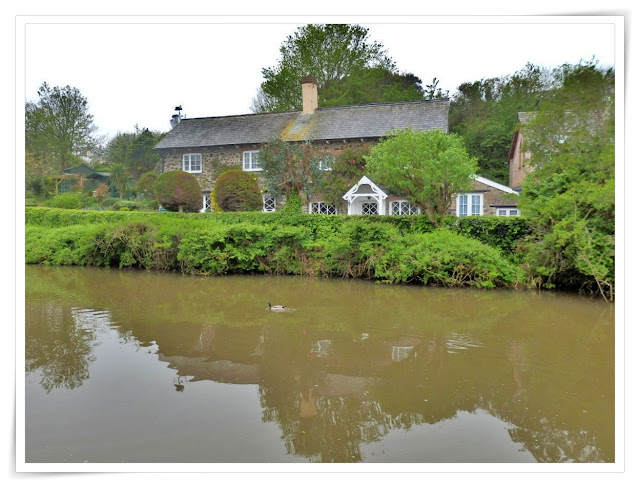When visiting Bude I was fascinated by the canal, which has only two locks. It's no longer used for carrying goods but there are a few pleasure craft on the water - photo above.
The three photos below show the lock and some of the workings at the Bude harbour end of the canal.
As I understand it plans were made to create a canal way back in 1774. The local sand is full of minerals and is used by farmers as a soil conditioner and enhancer. However the plans for the canal were thwarted until an Act of Parliament was obtained in 1819 giving permission for the work to begin.
The first 35 miles of canal were completed by 1825 and there were high hopes of big profits carrying sand and other goods.
The building of the canal was quite a feat as it had, as mentioned, only two locks and also six inclined planes.
It became the first canal in the UK and second in the world to use water-powered tub-boat inclines, and it had the most inclined planes of any waterway.
Now I don't profess to fully understand inclined planes so I think I'll have to quote from Wikipedia :
"The unusual feature of the canal was the six inclined planes. The tub boats had wheels, and on the inclined planes they were pulled up the slopes with the wheels running in channel rails (like a squat letter "U" in section). There were two sets of rails, one for each direction, but it does not appear that a counterbalancing system was used (in which a boat coming down would balance one being pulled up).
The tub boats were hauled up and let down the inclined planes by chains, which were operated in most cases by waterwheels; the transit took five minutes or so."
Once completed the canal cut the cost of sand by as much as three-quarters. All well and good until, that is, the railway arrived in Bude in 1898. Those big expected profits never materialised. Today the canal looks very attractive and there is a walkway running alongside for walkers and cyclists - as photo above. Unfortunately it was raining when we walked along the path but there is much to see. There are some attractive old cottages, as below, and so on.
Off to the side, at the Bude end, there are nature reserves for birds and other wild life.
We had a pleasant walk alongside the canal despite the rain. Several men were fishing - they need a licenc. There was no sign of any catches, but they seemed happy enough!
More information on the Bude Canal can be found on the Bude Canal and Harbour Society website.










I am very interested in this post and the workings of the lovely canal. There are many complex systems of locks and dams on the big rivers in the US and they are also interesting. Our canals are no longer used for transport by barges as they used to be, but there are ongoing efforts to save them as part of our history. I appreciate the extra link you have provided here, Mike. It looks like a fascinating area for exploration and as usual, your photos give an excellent view.
ReplyDeleteThanks Ann, sorry I'm slow in acknowledging, somehow I missed yours and David's comments. Lots of the UK canals are now used for pleasure boats and also updated traditional barges - popular with holidaymakers. I've read about several canals being updated so that they can be used.
DeleteWe've had many holidays in Warwickshire were there are a lot of canals and we enjoyed walking along them. This one looks very inviting. I've never heard of an inclined plane being used on a canal, interest I g post, as always.
ReplyDeleteHello David, sorry I'm slow in answering your comment. Have often thought about having a break on a canal boat. We've done the Norfolk Broads several times and have enjoyed the slow pace of life - the boats only do about 4 mph. Thanks.
Delete